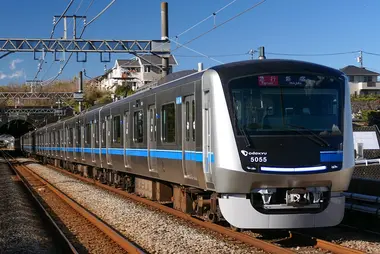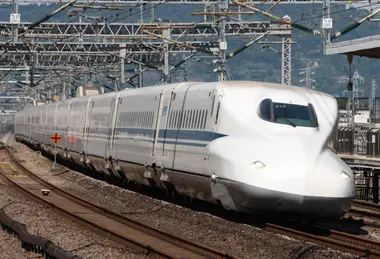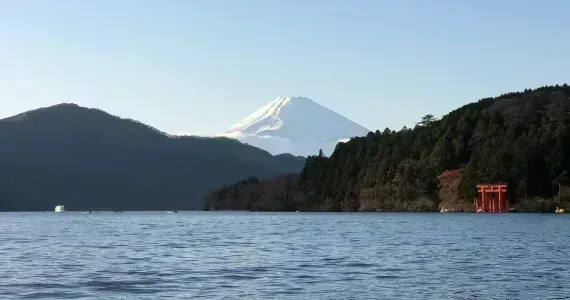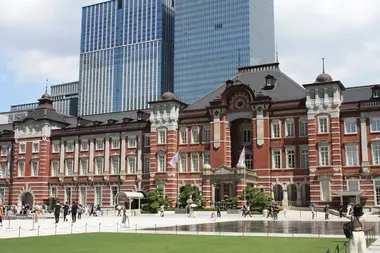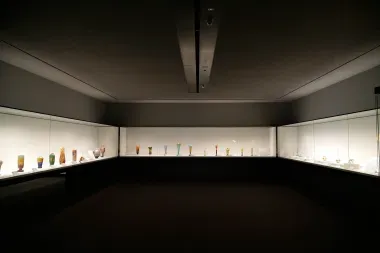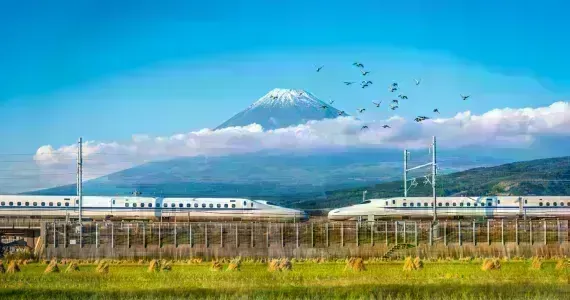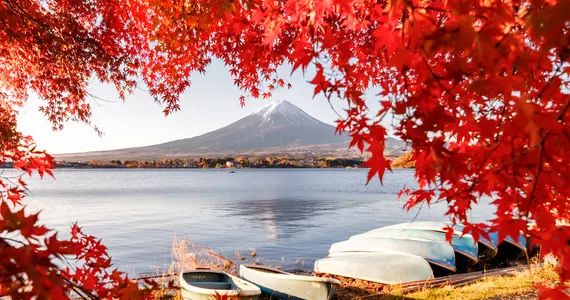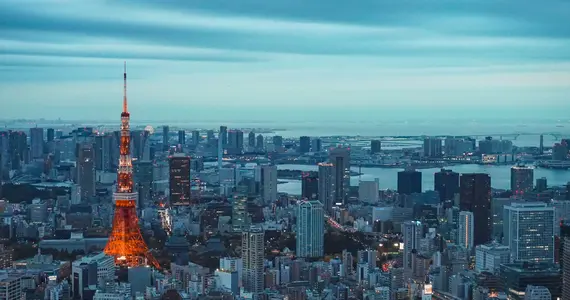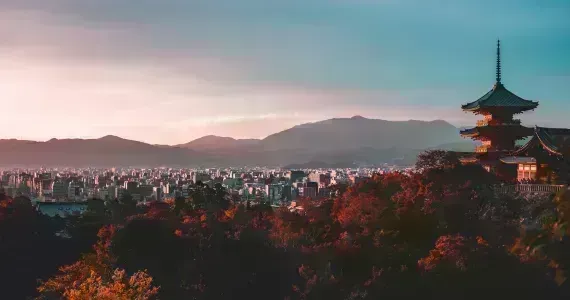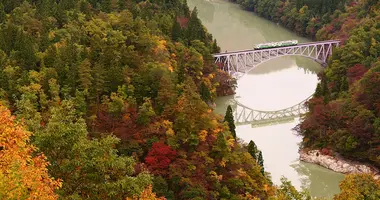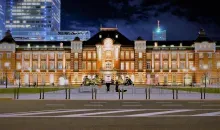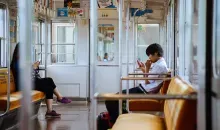How to get from Tokyo to Hakone
Hakone in Kanagawa Prefecture is an essential destination in the Kanto Region, an area rich in natural beauty and a renowned destination for art culture. It's easily accessible from Tokyo’s Shinjuku Station via the Odakyu Line.
One of the most definitive getaway destinations in Japan, Hakone is a picturesque location in Kanto that strongly contrasts with the bustling Tokyo metropolitan area only a few hours away but in no way compromises enjoyment and charm. Make your way out to this spot in Kanagawa for a day trip for a major leg of your Japan travel itinerary easily with the Odakyu Line, either with the Hakone Free Pass or an individual ticket with or without a reserved seat, or a number of other travel options!
Take the Odakyu Line from Shinjuku Station with local trains of the Limited Express RomanceCar
Take the Tokaido Shinkansen from Tokyo Station then transfer at Odawara Station to Hakone-Yumoto Station
Take a highway bus from Shinjuku Station
Drive out to Hakone using a car if you have access to one in Japan
Getting from Tokyo to Hakone by train
Taking the Odakyu Line from Shinjuku Station
- ⏱ Travel Time: Approximately 1h20 to 2 hours
- ⏲First and Last Departure: 5:00 a.m. / 12:43 a.m. (next day)
- 💶 Price: From ¥1,270
- 🚆Distance: 111 km
- 🚉 Departure/Arrival Station: Shinjuku Station/Hakone-Yumoto Station
- 🚃Transfer Station: Odawara Station
- 🚅 Train Type: Odakyu Local Train/Odakyu Romance Car
The journey to Hakone takes around two hours and entails departing from Shinjuku Station in central Tokyo, riding out to Odawara Station, then transferring and continuing to ride to Hakone-Yumuto Station.
On the Odakyu Line, either the local trains or the Limited Express Romance Car can be ridden. On local lines, the fare costs 1,270 yen and can be paid with a standard IC card or with a ticket. For the Limited Express RomanceCar, an additional reservation ticket is needed, totaling 2,470 yen.
This journey via the Odakyu Line is covered by the Hakone Free Pass; however, there is still an additional surcharge for pass holders to get a seat on the RomanceCar (around 1,200 yen). This pass also grants access to many of Hakone's major attractions. Other great options for getting to and around Hakone from Tokyo include the Fuji Hakone Pass and the Hakone Kamakura Pass.
Via local Odakyu trains, with a transfer at Odawara Station, the journey takes around 2 hours. The RomanceCar makes the journey in around 1 hour and 20 minutes and goes direct.
Between the two destinations is around 111 kilometers (70 miles). The first train out towards this area from Shinjuku Station departs at 5:00 AM, with the last train leaving at 12:43 AM the next day.
Taking the Shinkansen bullet train from Tokyo Station
- ⏱ Travel Time: Approximately 1 hour
- ⏲First and Last Departure: 6:21 a.m. / 10:48 p.m. (next day)
- 💶 Price: From ¥3,653
- 🚆Distance: 111 km
- 🚉 Departure/Arrival Station: Tokyo Station/Hakone-Yumoto Station
- 🚃Transfer Station: Odawara Station
- 🚅 Train Type: Tokaido Shinkansen Bullet Train/Odakyu Local Train/Odakyu Romance Car
Another option for getting to Hakone from Tokyo via train is that of the Shinkansen bullet train! From Tokyo Station, using the Tokaido Shinkansen Line, travelers can take the Shinkansen and go to Odawara Station. It takes only 30 to 40 minutes to get out to Odawara from Tokyo Station this way, but you will need to transfer from Odawara Station to the Odakyu Line to get to Hakone-Yumoto Station. This leg of the journey takes anywhere from 10 to 20 minutes.
From Tokyo to Odawara, the Shinkansen will be covered by the Japan Rail Pass; however, from Odawara to Hakone-Yumoto will not be, as it is part of the Odakyu Line. However, this leg of the journey would be covered by the previously mentioned Hakone Free Pass.
For those traveling around Japan with a JR Pass, the Hakone Free Pass is a great supplement that will allow you to get around Hakone, which doesn’t have many services that are covered with the JR Pass. JR Pass holders can take advantage of the fast travel times of the Shinkansen from Tokyo Station and then use the Hakone Free Pass to get to Hakone Yumoto and then travel around the greater Hakone area.
Reserve tickets for Tokyo to Hakone!
Travel to and throughout Hakone with the Hakone Free Pass!
Getting from Tokyo to Hakone by bus
The Odakyu Highway Bus that departs from Shinjuku is the best way to get to Hakone via bus. The terminal stop is Togendai on the north side of Lake Ashi in Hakone, with many other stops around Lake Ashi on the way as well. It is 1,800 yen to take these buses, but for holders of the Hakone Free Pass, the price is reduced to only 1,000 yen! The total commute is around 90 to 100 minutes all the way to Togendai.
These buses also go out to Gotemba in Shizuoka before looping to Hakone. This area is even nearer Mount Fuji and is frequented for shopping, as there is a large outlet mall in the area.
There are also buses that go to and from Hakone Togendai and Haneda Airport in Tokyo. These buses will also pass and stop at Yokohama Station, the busiest station in Kanagawa Prefecture.
Getting from Tokyo to Hakone by car
For those wanting optimal flexibility, Hakone is well within driving distance from Tokyo. However, it is worth noting that traffic between Tokyo and Hakone can be quite slow depending on the time of day, so it is worth considering the optimal times to depart from either destination. However, on the way there, you are free to check out lesser-known destinations in between! With highways, the total commute time with non-peak traffic is around 1 hour and 40 minutes with highways and toll roads, costing anywhere from 5000 yen to 6000 yen.
Be aware that most travelers can drive in Japan if they have an international driver's license. However, visitors with licenses issued in France, Switzerland, Germany, Belgium, and Taiwan require a Japanese translation of their license to drive in Japan.
Exploring Tokyo
Tokyo, Japan's capital and the largest city in the world by population, is a popular starting point for travelers on the "Golden Route" since it offers something for everyone. Almost every rail station in this big city offers something exciting to discover, whether you choose to explore the brightly lit nighttime streets of Shinjuku or the more laid-back, hip neighborhoods like Koenji and Gakugei Daigaku.
Speaking of train stations, Tokyo has an extensive and well-developed rail system that makes traveling to your destination easy and is much more convenient for those who have a Japan Rail Pass. Using key hubs like Shinjuku, Shibuya, Tokyo, or Ikebukuro Stations, various train lines, including those run by JR and the Subway Metro System, provide widespread access to most parts of the city. Selecting a rail station that you might not be familiar with is a simple way to explore a new neighborhood. There are chic stores, quaint cafes, and a variety of other sights to view outside.
Tokyo is a must-visit location for foodies on vacation, offering an infinite variety of top-notch dining options ranging from modest neighborhood cafes to internationally renowned restaurants. Tokyo has a diverse range of dining options, ranging from high-end, highly regarded restaurants to quick, simple, and reasonably priced street cuisine.
In fact, Tokyo is home to the majority of the world's Michelin-starred restaurants. Hip areas like Hatagaya and Setagaya are popular for their vibrant sake and wine bars, while Higashi Azabu has a plethora of well-known eateries that make for the ideal evening meal if you're looking for the best food experience.
Wandering around Shinjuku Station is an endeavor that can occupy a whole day (or more, if you wish). The densely populated central area is a hub for countless shops, restaurants, and other attractions, and the train station itself is actually the busiest one in the world, with around 3.5 million commuters accessing it on a daily basis. But if you’re intimidated by large crowds, fear not, as only a short walk away from the central part of Shinjuku are a number of more quaint neighborhoods and backstreets. Venture out a bit to Yoyogi or the neighborhood of Hatsudai to see what the more residential parts of central Tokyo are like!
Exploring Hakone
This gem in Kanagawa Prefecture is a short trip away from Tokyo and is home to some of the country’s most beautiful sites as well as being a center for art and culture. Here, some of the most awe-inspiring views of Mount Fuji can be seen, with the glistening Lake Ashinoko hosting a number of fun attractions and activities to engage in.
From Tokyo, Hakone is easily accessible from Shinjuku Station by way of the Odakyu Line services. Odakyu also issues the Hakone Free Pass, which allows visitors to take the train out to Hakone and utilize public transportation within the region.
Upon arriving in Hakone, many will note the unobstructed views of Mount Fuji, so clear that it almost looks like it's being projected onto the background. One of the best ways to take in the view? relaxing in the warm onsen hot springs that are prevalent in this area due to the proximity to volcanic activity.
Lake Ashinoko is the other major natural spectacle to see in Hakone. The surface of the water hosts a number of sightseeing boats, including one that is based off of an old, western-style pirate ship. On the coasts of Lake Ashinoko, travelers can rest and enjoy their time on the number of beaches that line the coastal trail, and one of Hakone’s most iconic symbols is that of the Torii gate of Hakone Shrine that leads out onto the lake’s waters. Try to go early in the morning to beat the crowds and enjoy the shrine grounds in peace!
For art lovers, Hakone is home to an unrivaled number of different art museums. The Hakone Open-Air Museum is a favorite of overseas and domestic travelers alike for its varied exhibitions and installations in an open-air environment, as the name implies.
The POLA Art Museum is also a staple destination for the Kanto region as a whole and is home to an impressive collection of Monet paintings for visitors to see.
Getting to Hakone from Shinjuku Station in Hakone entails taking the Odakyu Line out to Hakone-Yumuto Station with a transfer at Odawara Station, which is about an 80-minute journey. Hakone-Yumuto is located directly in the charming backdrop of Hakone and is actually within the proximity of a number of natural onsen hot spring bathhouses, which may serve as a great initial place to visit.
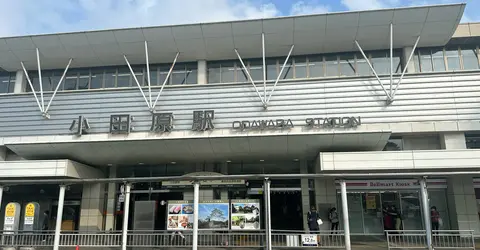
Odawara Station
@Wikimedia
From Skytree to Fuji
One of the most definitive getaway destinations in Japan, Hakone is a picturesque location in Kanto that strongly contrasts with the bustling Tokyo metropolitan area only a few hours away but in no way compromises enjoyment and charm. Make your way out to this spot in Kanagawa for a day trip for a major leg of your Japan travel itinerary easily with the Odakyu Line, either with the Hakone Free Pass or an individual ticket with or without a reserved seat.


